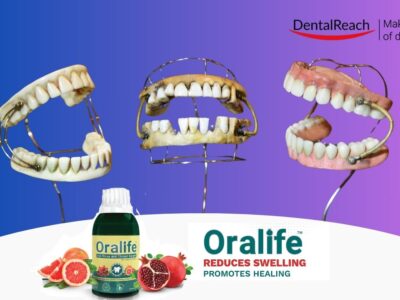CATEGORY: REVIEW
AUTHOR: Dr. MANISH KUMAR, House Surgeon,
NSVK Sri Venkateshwara Dental College & Hospital, Bangalore, Karnataka
CO-AUTHOR : Dr. GAURAV BDS, SCADA (USA), MDS
Consultant Oral Physician & Maxillofacial Radiologist
Assistant Professor, Dept of Oral Medicine & Maxillofacial Radiology
NSVK Sri Venkateshwara Dental College & Hospital, Bangalore, Karnataka
CORRESPONDENCE ADDRESS: Dr.Gaurav, dr.gaurav.sunny@gmail.com
The concluding volume of this article would include various studies that have been conducted in order to highlight the significance of panoramic radiography exclusively in addition to the various indications and conditions in which panoramic radiography is a mandatory investigative imaging modality.
VARIOUS STUDIES CONDUCTED IN ORDER TO COMPARE THE EFFICACY AND ACCURACY OF CLINICAL AND RADIOLOGICAL (PANORAMIC) EXAMINATION
The purpose of a study conducted by Moll Miriam Seuthe, Constantin von See et al was to compare clinical findings with x-ray findings using dental panoramic radiography (DPR).Various lesions and pathologies were taken into consideration in this study and it was finally concluded that pathological findings are more frequently uncovered clinically than by using x-rays.1
Felipe Paes Varoli, Luiza Verônica Warmling et al conducted a study in order to establish that radiographic examination is the most affordable and widely used complementary examination in dentistry. A total of 1937 panoramic radiographs were evaluated in this study, and the results were divided into groups according to patient’s gender and age. It was concluded that digital panoramic radiography is of the great value for lesions and anomalies diagnosis, as a complement of clinical practice. This study reports the most common alterations of teeth are it’s absence /anodontia, teeth extrusion / inclination / migration / transposition/ rotation, image suggestive of carious lesions and periapical lesions, which were predominant in the female group.2
The purpose of the study conducted by Jin-Woo Choi et al was to assess the diagnostic ability of panoramic radiography in dental diseases compared with clinical examination and to evaluate the possibility of panoramic radiography as a national oral examination tool. It was concluded that the use of panoramic radiography as a supplement to the clinical examination in national oral examination might enhance the public oral health.3
There was a yet another study conducted by Peker, Toraman Alkurt M, G Usalan, B Altunkaynak et al was to compare the subjective image quality and effectiveness of panoramic radiographs. Additionally, the advantages of digital panoramic techniques were found to be fast communication of images, the small storage space needed, and lower contamination of the environment. It was concluded that due to these features many occult pathologies can be detected in the radiographs which cannot be elicited clinically.4
The study conducted by Seo-Young An, Chang-Hyeon An, Karp-Shik Choi et al reveals no different scenario. The purpose of the study was to evaluate the efficacy of panoramic radiography by comparing the results of clinical examination with radiographic findings. 190 patients were studied in this in which findings taken from the panoramic radiography were: dental caries, periapical lesion, alveolar bone loss, calculus deposition, retained root, impaction of the third molar, disease of maxillary sinus, bony change of mandibular condyle, etc. It was concluded that the use of panoramic radiography as a supplement to the clinical examination might be a valuable screening technique.5
In our study too, we have tried to make use of the panoramic radiography as a screening tool in order to assess the occult lesions which are not detected clinically but can be found as incidental findings on the radiograph. In this study, 130 subjects were taken into consideration and our arena of concern was focused to following four categories(clinically as well as radiographically):
- Dental caries.
- Periodontal assessment.
- Findings related to the Temporomandibular joint.
- Occult findings (as explained in the following section).
1. DENTAL CARIES
Caries diagnosis is one of the most basic diagnostic skills that oral healthcare professionals must learn; and yet, it remains one of the most difficult skills to reliably and predictably master.
The principle of caries detection is a simple procedure —detect mineral loss in teeth visually, radiographically or by some other adjunctive method.7 There can be many issues that affect this task, including training, experience, and subjectivity of the observer; operating conditions and reliability of the diagnostic equipment. A critical factor to consider is that most of the research on caries detection has focused on occlusal and smooth surface caries. There are two reasons for this—
- From a population standpoint, more new carious lesions are occlusal lesions today than in the past; and,
- Many studies rely on screening examinations without intraoral radiographic capability.8,9
Staging & types :
Today various technologies have come up to assist the dentist with the diagnosis of dental caries; however, it is extremely important to realize, especially for the young dental professional, that the diagnosis of a carious lesion is only one aspect of the entire management phase for dental caries. In fact, there are many aspects of managing the caries process besides diagnosis. The lesion needs to be assessed as to whether the caries is limited to enamel or if it has progressed to dentin.6 The activity level of the lesion needs to be determined since cavitated lesions continue to trap bacterial plaque and need to be restored. A single evaluation will only tell the clinician the condition of the tooth at that single point in time; but, is the demineralization increasing or, perhaps is it decreasing?
The standard American Dental Association (ADA) caries classification system designated dental caries as initial, moderate, and severe. This was commonly modified with the term ‘incipient’ to mean demineralized enamel lesions that were reversible. The International Caries Detection and Assessment System (ICDAS) for caries diagnosis offers a six-stage, visual-based system for detection and assessment of coronal caries. It has been thoroughly tested and has been found to be both clinically reliable and predictable. Among its greatest strengths are that it is evidence based, combining features from several previously existing systems and does not rely on surface cavitation before caries can be diagnosed.10
Ethics of Caries Diagnosis:
One of the five principles of the American Dental Association’s Code of Ethics is non-malfeasance, which states that oral healthcare professionals should ‘do no harm’ to his or her patients. By enhancing their caries detection skills, dental practitioners can detect areas of demineralization and caries at the earliest possible stages. These teeth can then be managed with fluorides and other conservative therapies instead of preventive fillings. .11 Continuing to stress the preventive approach to managing early caries begins with early diagnosis; but, what better way to ‘do no harm’ to our patients than to avoid placing restorations in teeth with early demineralized enamel lesions?
Continuum of Caries Diagnosis:
One approach to categorizing the methods that oral healthcare professionals use for caries detection is to place them on a continuum beginning with the most simple, or least invasive, and work up to more sophisticated techniques. With that in mind –
- The first tool that oral professionals use for caries detection is purely visual—their eyes.12 The earliest detectable changes within tooth structure affect the microporosity of enamel, which in turn affects the transmission of light through the enamel.
- Next , would be color changes within enamel and dentin followed by –
- Defects within the enamel. These can be detected visually with the clinician’s eyes using direct vision or vision assisted with a mirror and a standard dental operatory light. In addition, a small, rounded-end (not sharp) dental explorer or probe can assist with the detection of small defects.13
- Traditionally, the first level of technology beyond the basic eyes of the examiner has been bitewing radiography—either conventional or digital. It has been shown that there is essentially no difference between the diagnostic capabilities of film and digital radiography when used for bitewings.
Radiography of dental caries:
Most oral healthcare professionals that have been in practice a few years have developed routines that have resulted in distinctive practice personalities. These are generally good, but sometimes these routines may need to be evaluated to see if they still meet good scientific principles that are accepted by the profession. One of these routines may be the radiographic selection criteria that were recently updated by the ADA and FDA.14
To paraphrase the conclusion of the update, radiographs should be made only when there is a reasonable expectation that the diagnostic information obtained from the radiograph will affect the treatment outcome. Now, the intraoral bitewing technique is the most widely used radiographic examination for caries detection.15,16 On a practical level, this means that dental practices should no longer have a policy of taking bitewings at pre-set intervals for all adult patients; but, rather, the decision to order radiographs should be personalized and based on clinical findings such as restorative history, caries risk, plaque score, etc. The radiographic selection criteria document will provide an excellent guide for today’s oral healthcare professional.
The ICDAS classification system was developed primarily as a visual based caries classification system; however, if dentists are to use this as their caries diagnosis tool, it must also apply to caries diagnosed from radiographs as well. The author has used the ICDAS caries definitions and applied them to the appearance of carious lesions on bitewing radiography.17
2.PERIODONTAL ASSESSMENT
Radiography plays a very important part in the diagnosis, study and treatment of periodontal disease but it has its own limitations as in the case of gross periodontal disease which may be present with no radiographic indication of abnormality. The proper approach to the diagnosis of periodontal disease is a clinical one with the use of radiographs either to support some clinical finding or to yield additional evidence when possible. The radiographic projections available to study periodontal tissues include periapical, bite-wing and panoramic.18
Periapical radiograph is the film of choice for the evaluation of periodontal disease. The paralleling technique is preferred for the demonstration of the anatomic features of periodontal disease. It provides for more accurate assessment of crestal bone height. Panoramic radiograph has little diagnostic value in the identification of periodontal disease. It is useful as a general survey, but may not show precise details. In view of the limitations in fine detail on DPRs, supplementary intraoral radiographs may be necessary for selected sites.
Full-mouth IOPAs or 1 single OPG?
Full-mouth surveys of paralleling periapical radiographs have been considered to be a ‘gold standard’ for periodontal diagnosis and treatment planning.19 However if a panoramic radiograph is readily available that radiograph may alone be sufficient, or a panoramic radiograph may be supplemented by selected intraoral radiographs which numbered less than four per patient to reach the ‘gold standard’. It has been shown that if seven periapical radiographs supplement a panoramic oral radiograph then the effective radiation dose exceeds that of a full-mouth series of periapicals, but if the number is less than four, then there is a reduction in radiation exposure and yet the ‘gold standard’ in terms of information can be achieved. In the interpretation of the periodontal tissues, images of excellent quality are essential because of the fine detail that is required. Also, exposure factors should be reduced when using film-based techniques to avoid burn out of the interdental crestal bone.20
BENEFITS OF RADIOGRAPHS IN PERIODONTAL DISEASE
Despite its limitations, periodontal examination is incomplete without accurate radiographs, which can show most bony changes in association with periodontal disease.
Early Radiographic Changes in Periodontitis
Radiograph is not sensitive enough to detect the earliest signs of periodontal disease. Glickman listed the sequence of early radiographic changes that occur in periodontitis as
- Crestal irregularities -The crest of the interdental bone becomes rough and irregular along with indistinctness and interruption in the continuity of the lamina dura seen along the mesial or distal aspect of the interdental alveolar crest.
- Triangulation – Triangulation is the widening of periodontal membrane space along either mesial or distal aspect of the interdental crestal bone. The sides of the triangle are formed by lamina dura and the root and the base is toward the crown
- Interseptal bone changes – One of the earliest radiographic signs of periodontitis is the finger-like radiolucent projections extending from the crestal bone into the interdental alveolar bone. These projections are result of a deeper extension of the inflammation from the connective tissue of the gingiva. They represent widened blood vessel channels within the alveolar bone that allow for the passage of inflammatory fluid and cells into the bone.21-23
Evaluation of Bone Loss
The radiograph actually indicates the amount of bone remaining and the amount of bone loss attributed to periodontal disease can be estimated indirectly as the difference between the physiologic bone level and the height of remaining bone (Fig.2).
Bone loss can be determined in terms of –
- Distribution – When the bone loss occurs in isolated areas, with less than 30% of the sites involved, it is described as localized bone loss. When the bone loss is evenly distributed throughout the dental arches, with more than 30% of the sites involved, it is called generalized bone loss (Fig.3).
- Pattern – When the bone loss occurs on a plane that is parallel to a line drawn from CEJ of a tooth to that of an adjacent tooth, it is called horizontal bone loss (Fig. 4). When the bone loss occurs on a plane that is at an angle to a line drawn from CEJ of a tooth to that of an adjacent tooth, it is called vertical or angular bone loss (Fig. 5).
- Severity – Bone loss viewed on a dental radiograph can be defined as slight bone loss (1 to 2 mm), moderate bone loss (3 or 4 mm) and severe bone loss (5 mm or greater).23

FIG. 2: EVALUATION OF AMOUNT OF BONE LOSS

FIG. 3: GENERALIZED BONE LOSS

FIG.4: HORIZONTAL BONE LOSS

FIG.5: VERTICAL BONE LOSS
Furcation Involvement
Extension of the periodontal pocket between the roots of multi rooted teeth is called furcation involvement. Radiographs can be helpful in locating furcation involvement; however, the furcation involvement will not be seen unless the bone resorption extends apically beyond the furcation. Mandibular molar furcation is much more sharply defined (Fig. 6) than the maxillary molar furca where the palatal root is superimposed over the furcation (Fig. 7). Widening of the PDL space at the apex of the inter radicular bony crest of the furcation is strong evidence that the periodontal disease process involves the furcation. If sufficient bone loss has occurred on the lingual and buccal aspects of a mandibular molar furcation, the radiolucent image of the lesion becomes prominent.24

FIG.6:FURCATION SEEN AS RADIOLUCENCY IN A MANDIBULAR MOLAR

FIG. 7: FURCATION IN MAXILLARY MOLAR SUPERIMPOSED BY A PALATAL ROOT
Predisposing Factors
A number of predisposing factors or local irritants contribute to periodontal disease. Dental radiographs play a major role in the detection of local irritants, such as calculus and defective restorations.25
- Calculus appears radiopaque on a dental radiograph often appearing as pointed or irregular radiopaque projections extending from the proximal root surfaces. Calculus may also appear as ringlike radiopacity encircling the cervical portion of a tooth (Fig.8), a nodular projection or a smooth radiopacity on a root surface. The diagnosis of absence or presence of calculus deposits should not be based on radiographic interpretation, since small deposits are not visible in radiographs.
- Gross proximal caries and root surface caries may be seen in conjunction with periodontal bone loss.
- Defective restorations act as contributing factors to periodontal disease. Radiographs are useful in detecting defective margins of restorations (Fig.9). However, if there is excessive vertical or horizontal angulation of the central X-ray beam, there is a risk of underestimating, but not overestimating the size of the defective margin.26

FIG. 8: CALCULUS APPEARS AS RING-LIKE RADIOPACITY

FIG. 9: DEFECTIVE RESTORATION CAUSING TRIANGULATION
Activity of the Destructive Process
The destructive process of periodontal disease can be evaluated by comparing standardized radiographs taken over regular intervals.
- When the interdental septal bone crest is rough and irregular and the alveolar bone below the crest is devoid of any suggestion of bone opacity, it is most likely that the resorptive process is active.27
- Nutrient canals indicate active and even rapid bone resorption.
- If a smooth surface of the alveolar bone with condensation of remaining alveolar bone is seen in the presence of bone loss, a static destructive process or slowly destructive process is indicated (Fig.10).
External root resorption is sometimes seen in conjunction with periodontal diseases. Its identification is important because of its implications for tooth prognosis.25,27

FIG. 10: SCLEROTIC MARGIN AT CREST SUGGESTING STATIC DESTRUCTIVE PROCESS
Hypercementosis
A direct causal relationship with periodontal diseases is not proven, but hypercementosis is seen occasionally on teeth with bone loss. It may be a response to inflammation or to the increased occlusal loading on a tooth with attachment loss. Hypercementosis appears as a bulbous enlargement of the root, most commonly seen in relation to the apical half of the root.28
CHRONIC PERIODONTITIS
Both localized and generalized chronic periodontitis are characterized by pocket formation and/or gingival recession, both clinically detectable without radiographs. Chronic periodontitis can be divided into
- localized, if less than 30% of available sites display clinical attachment loss
- generalized if more than 30% of sites display clinical attachment loss.
This differentiation is made on the basis of clinical findings and so radiographs are not required, although radiographs may be used like –
- In some clinical situations restorations may impede the accessibility of the periodontal probe into a pocket and/or may obscure the CEJ and so compromise the clinical assessment of the presence and severity of chronic periodontitis.
- Subgingival calculus or root surface topographies or malformations may impede the passage of the periodontal probe. 28
AGGRESSIVE PERIODONTITIS
Aggressive periodontitis refers to periodontal disease of an aggressive and rapid nature that usually occurs in patients below 30 years. Its cause is not known; however, specific bacterial pathogens like Actinobacillus actinomycetemcomitans, functional defects of polymorphonuclear leukocytes, exuberant immune responses and inheritable factors have been implicated.
Aggressive periodontitis is subclassified into –
- Localized aggressive periodontitis is associated with attachment loss involving the incisors and first molars. In this form, the amount of bone loss correlates with the time of tooth eruption, in that the teeth that erupt first (incisors and first molars) have the most bone loss. This disease usually commences around puberty and the bone loss is rapid. Of interest is the fact that there are usually very few signs of soft tissue inflammation or plaque accumulation despite the presence of deep bony pockets. Often the patient will present with drifting and mobile incisors and early loss of first molars. The radiographic appearance of the bone loss in localized aggressive periodontitis typically consists of deep vertical defects. Maxillary teeth are involved slightly more and a strong left-right symmetry is common.
- Generalized aggressive periodontitis can involve a variable number of teeth, from the least three to all of the dentition, and by definition is not confined to the first molars and incisors. The rapid bone loss may be of the vertical or horizontal pattern.28,29
PERIO-ENDO LESION
This entity that may present clinically in a variety of ways is incompletely understood. It refers to teeth (typically molars) that have concurrent clinical and radiological signs of disease of periodontal and pulpal origin (Fig. 11). It may arise as a result of infection in a necrotic pulp draining via the periodontal ligament (usually in the presence of existing periodontal disease), toxins from pulp reaching PL space via lateral or accessory canals, especially in the furcation region and the root perforation.29

Fig.11: PERIO-ENDO LESION
PROGNOSIS
Prognosis based on radiographic information is considered good if –
- the destructive process is not generalized,
- only a limited amount of bone has been lost,
- corrective etiologic factors can be identified,
- the patient’s general health is good and
- most importantly the patient is motivated to save the remaining teeth and is capable of performing all routine and specialized home-care procedures
LIMITATIONS OF RADIOGRAPHS IN PERIODONTAL DISEASE
Radiographs may provide an incomplete presentation of the status of the periodontium. Some of the important limitations of radiographs are:
- The condition of gingiva cannot be predicted from the radiographic appearance of alveolar crest.
- Radiographs provide two-dimensional views of three dimensional situations. They often fail to disclose osseous destruction particularly that confined to the buccal or lingual surfaces of teeth.
- Radiographs typically show less severe bone destruction than is actually present.
- Measure of bone level from the CEJ is not valid when there is over eruption or severe attrition with passive eruption.
- Radiographs do not demonstrate the soft tissue to hard tissue relationship and thus provide no information about the depth of soft tissue pockets. However, if a radiopaque material, such as gutta-percha is inserted into the pocket, the base of the pocket can usually be recorded on the radiograph.
- Widening of PDL space on radiograph does not necessarily indicate tooth mobility (Fig. 12).
- They do not specifically distinguish between the successfully treated cases and the untreated cases.29

FIG. 12: WIDENING OF PERIODONTAL LIGAMENT SPACE AROUND A TOOTH INDICATING MOBILITY
3. Findings related to the Temporomandibular joint region
There are about 54 findings in the temporomandibular joint (TMJ) region reported in the literature so far, representing 6.4% of all findings. The main findings in the study conducted by Scully et al were
- physiologic remodeling (2.3%),
- degenerative changes (2.1%), and
- condylar hypoplasia (1.9%).
According to logistic regression analysis, when controlling for age, females were 2.55 times more likely to exhibit TMJ disorders than men (P < 0.001, 95% CI [1.29,5.03]). This finding is commonly supported in the literature.27,29
The decision was made to place condylar changes into two main categories, either physiologic remodeling or actual degenerative changes, even though the radiographic signs of mild degenerative joint disease (DJD) can be similar to those associated with joint remodeling. Isolated TMJ flattening and/or subcondral sclerosis was interpreted as physiologic remodeling, while condylar erosions and/or osteophyte formation was interpreted as active condylar degeneration (DJD). Pette et al. and Allareddy et al. reported higher rates of degenerative TMJ changes in patients receiving CBCT imaging primarily for dental implant assessment, identifying degenerative changes in 39.0% and 6.2% of patients, respectively, while other studies investigating orthodontic populations report degenerative TMJ changes in only 0.5% to 3.6% of subjects. It has been demonstrated that the progression and severity of TMJ osseous changes are increased with advancing age. This lower incidence of degenerative changes in our sample, and other orthodontic cohorts in the literature, is likely due to the nature of an orthodontic population, i.e., consisting primarily of adolescents.24,28
4. INCIDENTAL FINDINGS OR OCCULT LESIONS ON THE RADIOGRAPHS
Radiographs are routinely included in the diagnostic battery for orthodontic treatment planning. On the other hand, panoramic radiographs are primarily used to detect missing and supernumerary teeth and to evaluate the eruption pattern and malposition of teeth. The panoramic radiograph is also an instrument for detection of hard and soft tissue pathology. 21
Very few studies have analyzed the prevalence of different pathologic or abnormal findings in radiographs ordered primarily for orthodontic purposes. No study has separately evaluated the prevalence of pathologic and abnormal findings in panoramic radiographs in children or adolescents for whom orthodontic treatment is planned.
INCIDENTAL FINDINGS IN VARIOUS ANATOMIC REGIONS91,92
Incidental finding category
DENTOALVEOLAR
- Supernumerary teeth
- Hypodontia (excluding third molars)
- Microdontia
- Impactions
- Enamel pearl
- Gemination
- Retained primary tooth/fragment
- Dilaceration
- Severe root shortening (localized)
- Ectopic position
- Idiopathic osteosclerosis
- Simple bone cyst
- Buccal bifurcation cyst
- Torus mandibularis
- Periapical cemento-ossesous dysplasi
- External root resorption
- Periapical rarefying osteitis
PARANASAL SINUSES
- Localized inflammatory conditions (mucositis-sinusitis)
- Pansinusitis
- Retention pseudocyst
- Sinus hypoplasia
- Sinus pnuematization
- Sinus aplasia
- Antrolith
SURROUNDING SOFT/HARD TISSUES
- Osteoma
- Pnuematization of mastoid air cells
- Soft tissue polyp
- Calcified carotid artery
- Osteoma cutis
- Calcified stylohyoid ligament
- Dystrophic calcification of lymph node
- Enlarged incisive (naso-palatine) canal
TEMPOROMANDIBULAR JOINT
- Condylar hypoplasia
- Physiologic remodeling (flat margins, subchondral sclerosis)
- Degenerative changes (osteophytes, erosions)
- Bifid condyle
CONCLUSION
The dental profession is committed to delivering the highest quality of care to each of its individual patients and applying advancements in technology and science to continuously improve the oral health status of the population. Clinical examination, which is based on a planned and appropriately designed case history performa, has been the most widely relied and trusted modality in order to assess the patients’ signs and symptoms. In this regard, the various dental radiographs, have always added to the clarity in understanding of the disease or disorder and thus formulating a better treatment plan based on accurate diagnosis.
Radiographs can help the dental practitioner evaluate and definitively diagnose many oral diseases and conditions. However, the dentist must weigh the benefits of taking dental radiographs against the risk of exposing a patient to x-rays, the effects of which accumulate from multiple sources over time.
Panoramic radiography due to its operation simplicity, low radiation dose, low cost, wide examined area and the ability to detect additional findings that it is widely used today. The use of panoramic radiography as a supplement to the clinical examination in national oral examination might enhance the public oral health. However, diagnostic accuracy of anterior region on panoramic radiograph is lower than that of intraoral radiographs.
Further researches are required to make balance between benefit, financial cost, and examination time. Panoramic radiography is valuable as a teaching method for patients also. The main reason of dissatisfaction to national oral examination is short time of examination and consultation. In a study by Shin et al, 83.2% of people responded that it was actually helpful and 70.6% of people responded panoramic examination was necessary.
Although panoramic radiography is effective and people desire panoramic radiography for oral examination, taking panoramic radiography in annual dental examination has a high risk of radiation exposure. All radiation exposures must be kept as low as reasonably achievable (ALARA). This could be achieved in three ways:
- Using physical methods of minimizing dose,
- Applying selection criteria, and
- Consistently producing high quality radiograph to avoid repeat exposure.
However, no lead protection is required during panoramic radiography. Thus, further investigations for selection criteria and quality management program of panoramic radiography in screening oral examination are required.
BIBLIOGRAPHY
- Wall BF, Fisher ES, Paynter R, Bird PD. Doses to patients from pantomographic and conventional dental radiography. Br J Radiol 1979; 52: 727-34.
- Lee JS, Kang BC. Screening panoramic radiographs in a group of patients visiting a health promotion center. Korean J Oral Maxillofac Radiol 2005; 35: 199-202.
- Choi HM. Comparison of the clinical examination with the panoramic radiography in the diagnosis of dental caries. Korean J Oral Maxillofac Radiol 1999; 29: 275-82.
- Phillips JE. Panoramic radiography. Dent Clin North Am 1968; 12 : 561-70.
- Pettit GG. Panoramic radiography. Dent Clin North Am 1971; 15 : 169-82.
- Packota GV, Hoover JN, Bell RC. Radiographic finding in a group of elderly patients at a Canadian dental school. J Can Dent Assoc 1991; 57 : 407-9.
- Johnson CC. Analysis of panoramic survey. J Am Dent Assoc 1970; 81: 151-4.
- Alattar MM, Baughman RA, Collett WK. A survey of panoramic radiographs for evaluation of normal and pathologic findings. Oral Surg Oral Med Oral Pathol 1980; 50: 472-8.
- Barrett AP, Waters BE, Griffiths CJ. A critical evaluation of panoramic radiography as a screening procedure in dental practice. Oral Surg Oral Med Oral Pathol 1984; 57: 673-7.
- King NM, Shaw L. Value of bitewing radiographs in detection of occlusal caries. Community Dent Oral Epidemiol 1979; 7 : 218-21.
- Mastoris M, Li G, Welander U, McDavid WD. Determination of resolution of a digital system for panoramic radiography based on CCD technology. Oral Surg Oral Med Oral Pathol Oral Radiol Endod 2004;97:408-14. Ledgerton D, Horner K, Devlin H, Worthington H. Panoramic mandibular index as a radiomorphometric tool: An assessment of precision. Dentomaxillofac Radiol 1997;26:95-100.
- Ledgerton D, Horner K, Devlin H, Worthington H. Radiomorphometric indices of the mandible in a British female population. Dentomaxillofac Radiol 1999;28:173-81.
- Lee K, Taguchi A, Ishii K, Suei Y, Fujita M, Nakamoto T, et al. Visual assessment of the mandibular cortex on panoramic radiographs to identify postmenopausal women with low bone mineral densities.
- Packota GV, Hoover JN, Bell RC. Trends in tooth loss due to caries and periodontal disease by tooth type. Oral Surg Oral Med Oral Pathol Oral Radiol Endod 2005;100:226-31.
- Syriopoulos K, Sanderink GC, Velders XL, van der Stelt PF. Radiographic detection of approximal caries: A comparison of dental films and digital imaging systems. Dentomaxillofac Radiol 2000;29:312-8.
- Ludlow JB, Davies-Ludlow LE, White SC. Patient risk related to common dental radiographic examinations: the impact of 2007 International Commission on Radiological Protection recommendations regarding dose calculation. J Am Dent Assoc 2008; 139: 1237-43.
- Diederich S, Lenzen H. Radiation exposure associated with imaging of the chest: comparison of different radiographic and computed tomography techniques. Cancer 2000; 89: 2457-60.
- Oginni FO. Tooth loss in a sub-urban Nigerian population: causes and pattern of mortality revisited. Int Dent J 2005; 55: 17-23.
- Jaafar N, Razak IA, Nor GM. Trends in tooth loss due to caries and periodontal disease by tooth type. Singapore Dent J 1989; 14: 39-41.
- Baehni PC, Guggenheim B. Potential of diagnostic microbiology for treatment and prognosis of dental caries and periodontal diseases. Crit Rev Oral Biol Med 1996; 7: 259-77.
- Trachtenberg F, Maserejian NN, Tavares M, Soncini JA, Hayes C. Extent of tooth decay in the mouth and increased need for replacement of dental restorations: the New England Children’s Amalgam Trial. Pediatr Dent 2008; 30: 388-92.
- Leininger M, Tenenbaum H, Davideau JL. Modified periodontal risk assessment score: long-term predictive value of t treatment outcomes. A retrospective study. J Clin Periodontol 2010; 37: 427-35.
- Ong G. Periodontal disease and tooth loss. Int Dent J 1998; 48: 233-8.
- Lorentz TC, Cota LO, Cortelli JR, Vargas AM, Costa FO. Tooth loss in individuals under periodontal maintenance therapy: prospective study. Braz Oral Res 2010; 24: 231-7.
- Dannewitz B, Krieger JK, Hüsing J, Eickholz P. Loss of molars in periodontally treated patients: a retrospective analysis five years or more after active periodontal treatment. J Clin Periodontol 2006; 33: 53-61.
- Matuliene G, Pjetursson BE, Salvi GE, Schmidlin K, Brägger U, Zwahlen M, et al. Influence of residual pockets on progression of periodontitis and tooth loss: results after 11 years of maintenance. J Clin Periodontol 2008; 35: 685-95.
- Muzzi L, Nieri M, Cattabriga M, Rotundo R, Cairo F, Pini Prato GP. The potential prognostic value of some periodontal factors for tooth loss: a retrospective multilevel analysis on periodontal patients treated and maintained over 10 years. J Periodontol 2006; 77: 2084-9.
- Pippi R. Benign odontogenic tumours: clinical, epidemiological and therapeutic aspects of a sixteen years sample. Minerva Stomatol 2006; 55: 503-13.
- Pippi R. Benign odontogenic tumours: clinical, epidemiological and therapeutic aspects of a sixteen years sample. Minerva Stomatol 2006; 55: 503-13.




















Comments